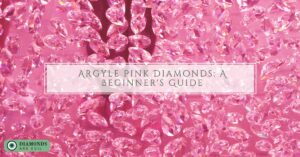Introduction
Diamonds are one of the great cherished gems found in the Earth’s crust. It is known for its uniqueness, hardness, and durability. It is popularly used in the production of engagement rings, necklaces, wedding rings, and diver kinds of jewelry. Diamonds are of two types, which are natural diamond found beneath the Earth’s surface and lab-grown diamonds. Lab-grown diamonds are also referred to as man-made diamonds and lab-created diamonds and synthetic diamonds.
Lab-Grown Diamonds
These diamonds are man-manufactured, which are created under controlled conditions, which are similar to that of its natural equivalents. Natural diamonds have been discovered by scientists to be formed millions of years ago under extreme pressure (727,000 pounds) and temperatures (over 2000 Fahrenheit) in the Earth’s core. Natural diamonds are moved up in the earth core by volcanic eruptions over the years, which now makes it accessible to exploration or mining by man.
Lab-grown diamonds are created by cutting edge technology under similar conditions to natural diamonds. These diamonds are very difficult to differentiate from their natural equivalents because they have similar optical, physical, refraction, and chemical properties. Therefore, the same value can be placed on both lab-grown diamonds and natural diamonds. There are two main methods of creating lab-grown diamonds, which are High-Pressure High Temperature (HPHT) and Chemical Vapour Depositions (CVD).
High-Pressure High Temperature (HPHT)
This process started in the 1950s to create diamonds without having to disrupt the Earth’s crust with mining processes. With this method, new and genuine diamonds were created in a controlled environment, and a color grade of existing diamonds can be improved.
The formation of diamonds under HPHT begins with a seed of diamond, which is placed into pure carbon in a high pressure, high-temperature chamber. There are three different press designs that are used in the HPHT method, and they are the cubic press, the split-sphere press, and the belt press. The heat in the chamber is placed to about 2000 Fahrenheit in which the carbon melts around the seed diamond and then cools down to form larger diamonds.
Chemical Vapor Deposition (CVD)
The invention of this method started in the 1980s in other to create more lab-grown diamonds. This method involves growing a thin slice of the diamond from a hydrocarbon gas mixture. It does not require high pressure like the HPHT method. The gases used in this method are ionized into active radicals in the growth chamber using microwave power, a hot filament, an electron, a laser, and other methods.
Chemical vapor deposition involves super high saturation of atomic hydrogen and various hydrocarbon radicals. Typically, 1 percent of the methane in hydrogen (1:99) as a source gas, under a temperature of about 900 degrees Celsius and 27Kpa gas pressure.
This method has different techniques that differ in gas phase activation and dissociation. The common techniques are microwave plasma and thermal method in which gas is activated by the hot filament. The difference of this method is seen in their deposition rate, area, and quality of diamond from the deposition.
Conclusion
Lab-grown diamonds are not in any way of lower quality than natural diamond, because both types of diamonds are of the same chemical, physical, refraction, and optical features. The two ways of creating lab-grown diamonds which are HPHT and CVD methods, which have their peculiarities. Therefore, it is worthy of note to know that lab-grown diamonds are as genuine and pure as natural diamonds.






